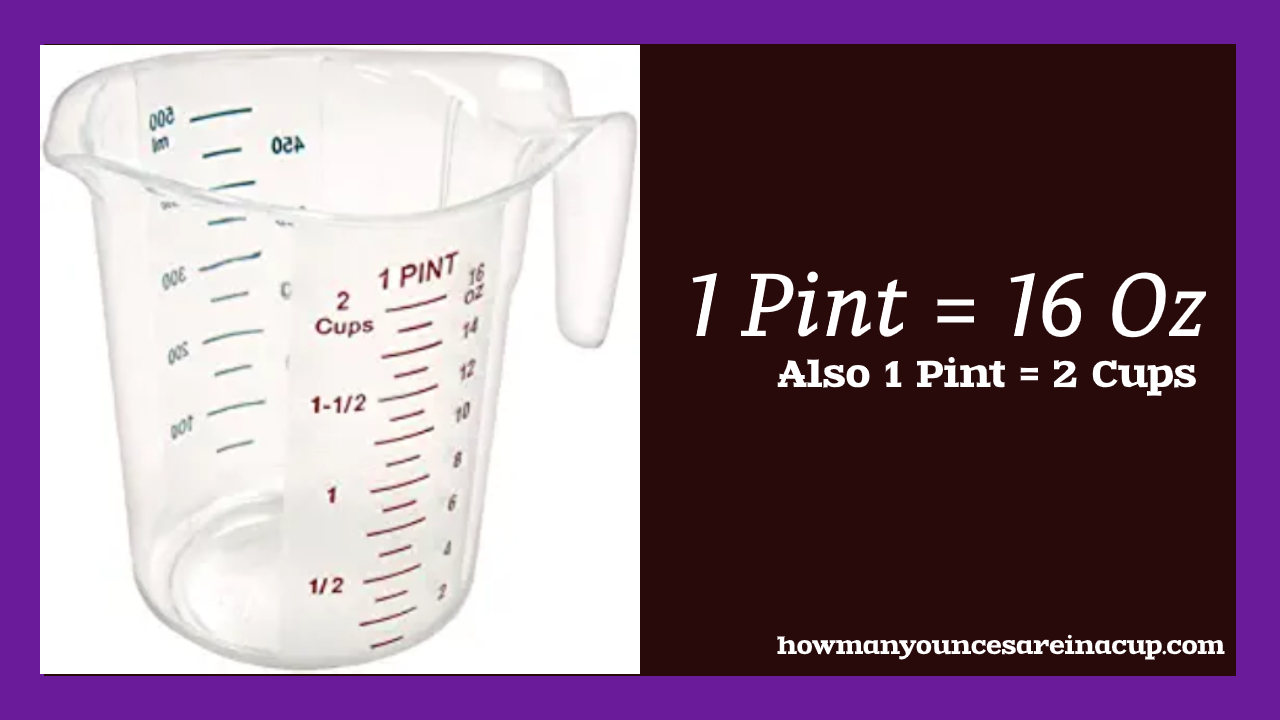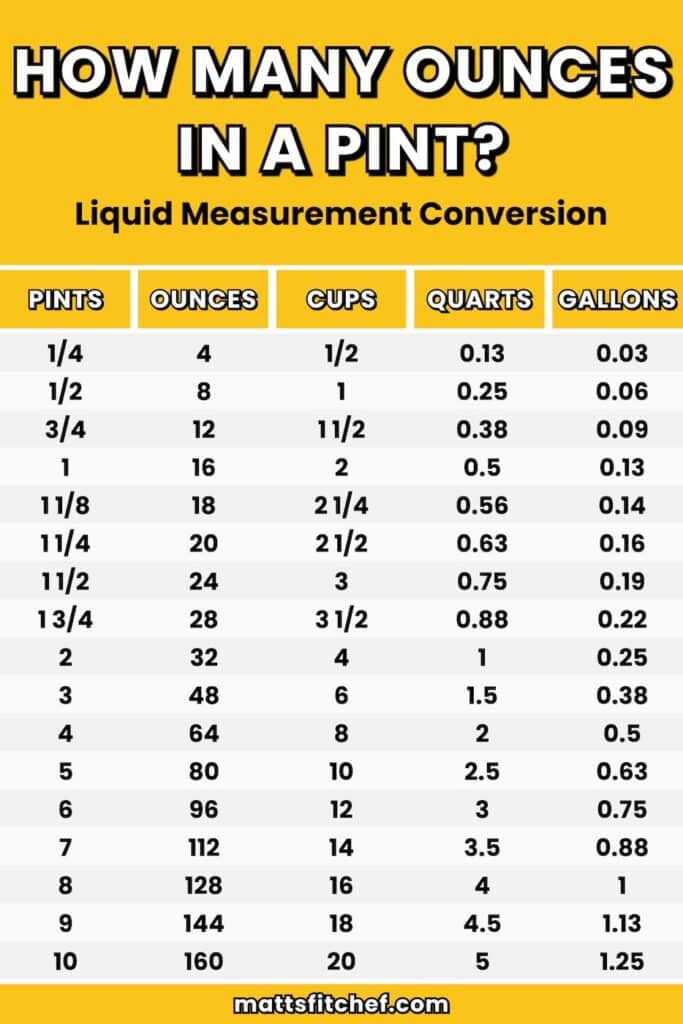Ounces & Pints: Conversions & How Many In A Pint? - Guide
How well do you truly understand the language of liquids? The accurate measurement of volume, especially in the realm of cooking and everyday life, hinges on a clear understanding of units like ounces and pints, and the subtle but crucial differences between them.
The world of measurement can seem deceptively straightforward. We encounter units of volume daily, from the morning coffee measured in fluid ounces to the milk we buy by the pint. But beneath the surface of these seemingly simple concepts lies a surprisingly complex landscape of systems, conversions, and potential for confusion. This is especially true when dealing with units like fluid ounces, pints, and quarts, which are used in both the U.S. customary system and the imperial system, each with its own set of definitions and equivalencies.
Cooking, in particular, is a profession that demands precision. Recipes are essentially instructions, and the accuracy of those instructions, in terms of ingredient quantities, is paramount to the success of a dish. A slight miscalculation in the volume of a liquid ingredient can drastically alter the final product, affecting its taste, texture, and overall appeal. This is where the knowledge of conversions between units of volume becomes indispensable.
The pint, a unit of volume, presents an interesting case study in this regard. In the U.S. customary system, a pint is equal to 16 fluid ounces. However, in the imperial system, used in the United Kingdom and other countries, the pint is a different entity, containing 20 fluid ounces. This seemingly minor difference can lead to significant discrepancies in measurement and, consequently, in the outcome of a recipe.
Furthermore, the concept of a "fluid ounce" itself warrants careful consideration. While often referred to simply as an "ounce," the fluid ounce measures volume, not weight. This is a crucial distinction. Ounces, without the "fluid" designation, are units of mass. This difference underscores the importance of specifying the type of ounce being used to avoid any ambiguity.
The following table provides a simplified overview of the basic conversions, designed to clarify the relationships between these commonly used units of volume.
| Unit | Equivalent in Fluid Ounces (US) | Equivalent in Fluid Ounces (Imperial) |
|---|---|---|
| 1 Pint (US) | 16 fl oz | Approximately 16.67 fl oz |
| 1 Pint (Imperial) | Approximately 19.2 fl oz | 20 fl oz |
| 1 Quart (US) | 32 fl oz | Approximately 33.38 fl oz |
| 1 Quart (Imperial) | Approximately 38.4 fl oz | 40 fl oz |
| 1 Cup (US) | 8 fl oz | Approximately 8.33 fl oz |
| 1 Gallon (US) | 128 fl oz | Approximately 133.33 fl oz |
| 1 Gallon (Imperial) | Approximately 153.6 fl oz | 160 fl oz |
The conversion between pints and fluid ounces is fundamental. To convert pints to fluid ounces in the U.S. customary system, you simply multiply the number of pints by 16. To convert in the imperial system, you multiply by 20.
For instance, if a recipe calls for 2 pints, and you are using the U.S. system, you'll need 32 fluid ounces (2 pints x 16 fl oz/pint). If the recipe specifies imperial pints, you would need 40 fluid ounces (2 pints x 20 fl oz/pint).
Furthermore, the relationship between fluid ounces, pints, and other units like cups and quarts is also crucial. In the U.S. system, 1 pint equals 2 cups, and 1 quart equals 2 pints. Knowing these relationships enables quick conversions and avoids the need for constant calculations. The fluid ounce is also directly related to the cup; 1 cup in the US customary system is equal to 8 fluid ounces. This relationship can be easily grasped, with one-half pint or 1/2 pint of liquid equating to 8 fluid ounces, and one-quarter pint or 1/4 pint equating to 4 fluid ounces.
The use of conversion calculators can greatly simplify the process. These tools often allow users to input a value in one unit and instantly see the equivalent in another. This is especially helpful for those less familiar with the conversion formulas or for situations where quick calculations are needed. Many online converters are available, and they are designed to facilitate this process.
It's also vital to remember that when dealing with ingredients that have density (the mass per unit volume), the weight in ounces can be derived from the volume in pints by multiplying by 16.6908 times the density of the ingredient in grams per milliliter. This is essential in applications where both volume and mass are used, like in certain baking recipes.
Beyond cooking, understanding these conversions is valuable in many other contexts. From understanding the volume of liquids in science experiments to navigating packaging labels and understanding product quantities, a solid grasp of these units is beneficial.
The U.S. dry pint is also a unit of measure, but it is specifically used for measuring dry goods like grains, fruits, and vegetables. This should not be confused with the liquid pint. One U.S. dry pint is an eighth of a U.S. dry gallon and is approximately 0.5506 liters.
One should be aware that the metric system provides the SI derived unit for volume, which is the cubic meter. One cubic meter is equivalent to 33,814.022558919 fluid ounces, or 2,113.3764099325 pints. Rounding errors can occur, therefore exactness is always best if precise measurements are required.
In conclusion, the ability to seamlessly convert between fluid ounces, pints, and other units of volume is a fundamental skill, regardless of the setting. From the kitchen to the classroom, from everyday shopping to complex scientific endeavors, understanding and applying these conversions is essential for accurate measurements and successful outcomes.


